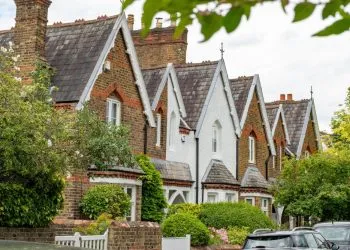Houses in multiple occupation (HMO) is a growing area for landlords but the mortgage rules are a little different from standard buy-to-let. Vincent Burch runs through the process
 As the popularity of houses in multiple occupation (HMO) properties has increased so too has the availability of specialist mortgages for this type of property.
As the popularity of houses in multiple occupation (HMO) properties has increased so too has the availability of specialist mortgages for this type of property.
In the last 10 years, the market has grown from having just a few mortgages available to hundreds now.
However, the pace of change and the complexity of securing the right HMO finance can be a daunting prospect for many landlords.
Here are some of the key things you need to know:
What’s the criteria for taking out an HMO mortgage?
HMOs are likely to experience a higher tenant turnover than single household occupancy properties and, for this reason, the interest rates charged by lenders on these specialist mortgages tend to be higher.
Although the principles remain fairly constant with that of a standard buy-to-let mortgage, typical areas of criteria that could differ for securing HMO finance include:
Property value – the minimum HMO property value is usually £100,000, although this can vary, depending on location and lender
Landlord experience – typically, lenders will not consider a first-time buyer or first-time landlord for an HMO Mortgage. Applicants are expected to have a minimum 12-month track record of owning a buy-to-let property before applying for an HMO mortgage.
Property height – some lenders specify a maximum number of storeys (up to four)
Occupancy – the maximum number of bedrooms is usually eight
Communal seating – some lenders require such a space to be available
Kitchen facilities – only one kitchen allowed in the property
Client type – loans are available to individuals and limited companies. They are also available to portfolio landlords
In addition to these HMO mortgage rules, you’ll have to meet the lender’s usual buy-to-let lending criteria on aspects such as age, income and credit history.
Obtaining the right advice before taking the plunge is vital. A specialist independent broker, such as Vincent Burch will help you to navigate the HMO mortgage minefield.
How much can HMO landlords borrow and what’s the impact of fees on total cost?
The maximum percentage of the property’s value you can borrow, known as the loan-to-value or LTV, is usually 75%, although it is possible to find HMO mortgages up to 80% LTV. This means you’ll need a sizeable deposit at the outset.
As with any mortgage, you should look at the set-up fees charged by lenders as well as the interest rates to compare the total costs over the initial period of the deal (for example, a two-year fixed rate). A broker can provide a thorough mortgage product comparison to find the best value deal for you.
How will my affordability for an HMO mortgage be calculated?
Most lenders carry out a mortgage stress test – a calculation to decide how much income you’ll need to cover the mortgage repayments – and therefore how much you can borrow.
Lenders need assurance that you can afford the repayments, particularly if interest rates go up. They use two main calculations:
Interest Cover Ratio – lenders use this to calculate how much interest you’ll be paying annually. They use an indicative interest rate, typically 5.5%, and simply multiply it by the loan amount to produce their estimate.
For example, if you’re taking out a loan of £200,000 and the Interest Cover Ratio is 5.5%, the annual interest you’ll be paying is £11,000.
Rental income – lenders use the Rental Cover Rate to work out how comfortably your rental income will cover your mortgage repayments.
To factor in things like rental void periods, they’ll often use a figure of up to 145% of the annual interest rate.
Using the previous example of £11,000 annual interest, this multiplied by 145% means you’d need to be achieving an annual rental income form the property of £15,950.
Other sources of income, your credit score and any additional rental properties you have and the rental income you earn from them will also be taken into account.
Vincent Burch is mortgage director at Vincent Burch Mortgage Services














